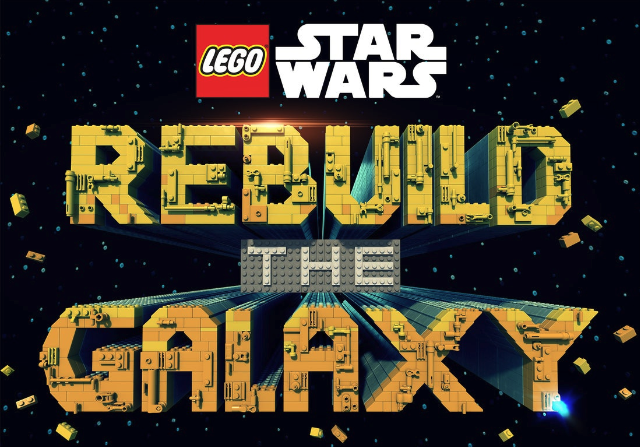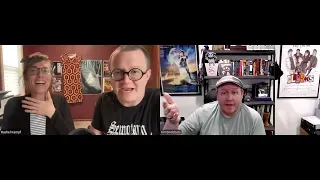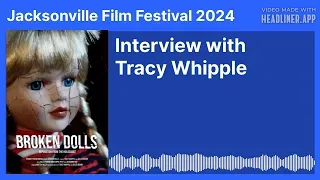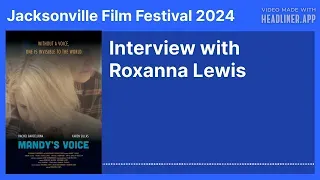Interview with Charlyne Yi & Nick Jasenovec
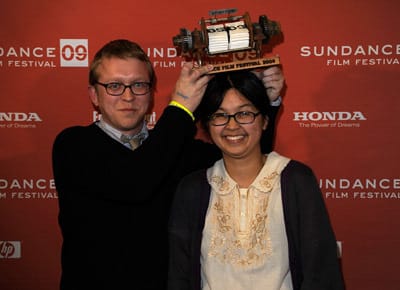
by CineNoir
Comedienne-musician-writer-artist-actress, is there anything uber-geek Charlyne Yi can’t do? In her charming mock-umentary, Yi travels across the United States quizzing the young and old on the most puzzling of questions: does love exist. Showing at The Times BFI 53rd London Film Festival, I got to have a heart-to-heart with both Charlyne and director (and Yi’s close pal) Nick Jasenovec.
Cine Noir (CN): Why a film about love? Why not a film about other worldly musings?
Charlyne Yi (CY): I think some people feel something in their lives and write a song about it, or whatever inspiration is happening they write about that or something regarding that. This specific topic, in my life, I was curious about love and questioning it, not so-much cynical I think [as] in the film, but so more that if you believe in love. But personally I was meeting people who were expressing their love stories, and I loved the stories and I would tell my friends, ‘Wow, these are great’. True stories that make you feel that way, I thought it would be great to capture that and make a movie about that and that was kinda the inspiration.
CN: I’m a cyanic about love and I don’t believe in love at all, and I though this film, coming a girl’s point of view, maybe this is just I how viewed it, that it is okay for girls to not be scared of not being loved.
CY: I think, no. A reference from [inaudible] love is so many different things. For the bikers, it’s them riding on the back of their hogs and eating hot dogs, and that what it means amongst them. Other people have these fantastical ideas and I think everyone questions whether it is real or not, and it’s a healthy thing. Everything that is said about it all I think is healthy and I think everyone does this.
CN: And you (to Nick), this is kinda your first directorial venture. Why did you jump on it and what do you hope to do in the future?
Nick Jasenovec (NJ): I’ve made a bunch of short films for a few years, probably ten years at that point, and I guess there really wasn’t much thought behind it, as much as it felt right in the moment, like Charlyne approached me about doing it. I guess I probably always imagined [that] the first film I would do maybe be something totally different, but when Charlyne came to me with the idea it just seemed like the right time to make that leap. It [the film’s production] came together very quickly too, so that helped the decision. The whole process was so fast that …
CY: It seems fast now that we look in retrospect, but at the time we were doing six months of constant pitching, you know, no-one wants to fund our movie, so it seemed like an eternality then.
NJ: Yeah, it was not pre-planned, that’s for sure; it was kind of spontaneous. Everything kinda aligned that way.
CN: Is it safe to say that (500) Days of Summer kinda rained on your parade.
NJ: A little bit, but …
CY: I saw the film and I don’t think that they are that alike now.
NJ: Yeah, I don’t think that they are similar now that I’ve seen it. When we first heard about it though, it was announced about a girl who didn’t believe in love, I was like, ‘Oh my God, what are the odds’. It such an obscure specific concept you know, it’s not like an asteroid hitting the earth or something, where you can expect multi-movies from that. So, we were definitely a little worried, but when I finally saw this summer and I think the only real similarities, aside that love thing, – which isn’t really stated that much in the movie – it’s just more that they are both fresh takes on an old genre and I think they are good companion films in that sense. I enjoyed it quite a bit.
CN: One of favourite bits in the film is the stop motion animation. But why use stop motion animation as opposed to cartoons or something else? It reminded me of Science of Sleep.
CY: Theirs [Science of Sleep] is actually stop-motion, but if you look at the panels and stuff, ours is actually puppets and arms. It would have been better actually.
NJ: We actually did do a stop motion sequence. We had a friend of ours shot one, but it didn’t make the film because it kinda…
CN: Put it in the DVD extras.
CY: Yes, it is.
NJ: Yeah, it will be on there. It was so different to the other ones we had shot, so it felt out of place.
CY: It felt jarred and it didn’t fit with the story anymore. But, why [puppeteer]? I guess watching documentaries all the time, with the talking heads telling the story and what they are saying doesn’t really apply to what you’re seeing, it’s like a stock footage or a still static shot of an old photo of them. I think for me, I kinda have ADD, I would like to see what I’m hearing. In FBI shows, you see it dramatised, and that was actually an idea but I think it would be much too silly and much more difficult. I’ve worked with puppets before and I made this little 45 second video of my fingers acting, which sounds ridiculous but it was fun. It would be cool to see that in a fantastical way, dream-like, recreating the story whatever they are, even if it is mundane thing.
NJ: Yeah, it sort of fits too; it kinda goes back to the introduction of Charlyne, in the Hollywood sort-of fairy-tale ideal of love, so it kinda plays into that. Then also too, the film is very small, in terms of lo-fi and handmade, it fit the [inaudible] quite well.
CN: The film kinda goes across several genres. It’s an animation/documentary/comedy. Did you feel that you might alienate audiences who didn’t quite get it?
CY: I think there are people who are going to get it. Of course I realize that everyone’s not going to like it or understand it. Maybe they do understand it, but don’t like it. That was something we were aware of.
NJ: I don’t think we really thought about it, we just did what felt right. I think when you’re making any piece of art, you just kinda have to trust your instincts. We didn’t think too much about the audience.
CY: I don’t think it was that weird, I think. Now that you’ve brought it up, I think, ‘Oh, I guess so’. I think the only thing that I was worried about was if the puppetry was going to be jarring. To go from that to real stuff.
CN: I think worked because the animation went with the anecdotes, but I wondered if the people understood the fiction side.
NJ: I knew we thought it would be a little bit confusing, but we thought that it might be fun for people.
CN: My favourite interview in the film is with the children in the park, especially the child who was like, ‘I love Chris Brown’. I just wondered if you felt the same now. But how did come the interviews and how did you get in contact with the people.
CY: Some of them were through this woman, Eileen Kennedy, who does casting. So she drove with a list of people were hoping to get with, people who were married for years. So she would go from town to town asking these strangers and where they were located. She would film that and sent it to us, and we would look through those. Some of them really won’t that good, but you could tell their personalities were so vibrant and we took a chance choosing people. For the playground, we were hoping that we would run into kids but we weren’t sure there would be enough kids, so we invited some kids there, and half of them were real kids there.
CN: You picked some pretty obscure and obvious place to discuss love, what was reasons behind these choices and what was life like on the road?
NJ: Our path was sort of decided by timing, money and the few specific cities we knew that we wanted to go to. Jester we met in Oklahoma City, and I’m sure for people outside America aren’t too familiar with it, so we just had this predetermined path and the casting director went along that same path and was finding people.
CY: She was going to interview some polygamists and that was on the plan. She sent a video, it was scary, she was filming and you see kids in pilgrim-esque clothes, digging holes in the background. And then she goes, ‘Oh, my God! That guy has a shotgun!’, and you have [a camera shot of] the shotgun, [inaudible] and it [the tape] gets cut off. And I’m like, ‘Oh, I guess we’re not going to interview polygamists’.
NJ: That is the one thing that changed. We had a day set aside for Utah to [interview] polygamists, but we couldn’t get any to be on the camera.
CN: I was going to ask why the film didn’t deal with inter-religious or interracial love.
NJ: I think we talked about doing arranged marriages.
CY: I guess it just didn’t pan out at the time. We ended up [generalising] so many people that they became occupational-like, like a bunch of psychics or a bunch of romance novelists. So, so much time was spent on very specific things.
NJ: I think we also had a priest and a rabbi as our religious figures. But at certain point we only had so much time and so much money, so certain things did get cut from that list.
CY: What we end up talking about in the [inaudible] was something else.
CN: I’ve heard that you two, along with Jake (Johnson, who plays Nick in the film), have another project planned. Can you divulge anything about it?
NJ: We can’t talk about it too much, but it is basically a TV show that we are working on, a script for HBO. We’re only guaranteed a script at this point, so we may not even get to shoot it, but ideally we’ll get to shoot it and they’ll like it. It’s kinda too early to tell, so I don’t think we’re allow to divulge too detail about it, but we’re working on it and it’s going well.
CN: My favourite quote in the film is by Seth Rogen, and I wanted to know if your love glass is half full or half empty?
CY: It’s completely full.
CN: And yours? (to Nick)
NJ: Half empty at the moment, I guess.

